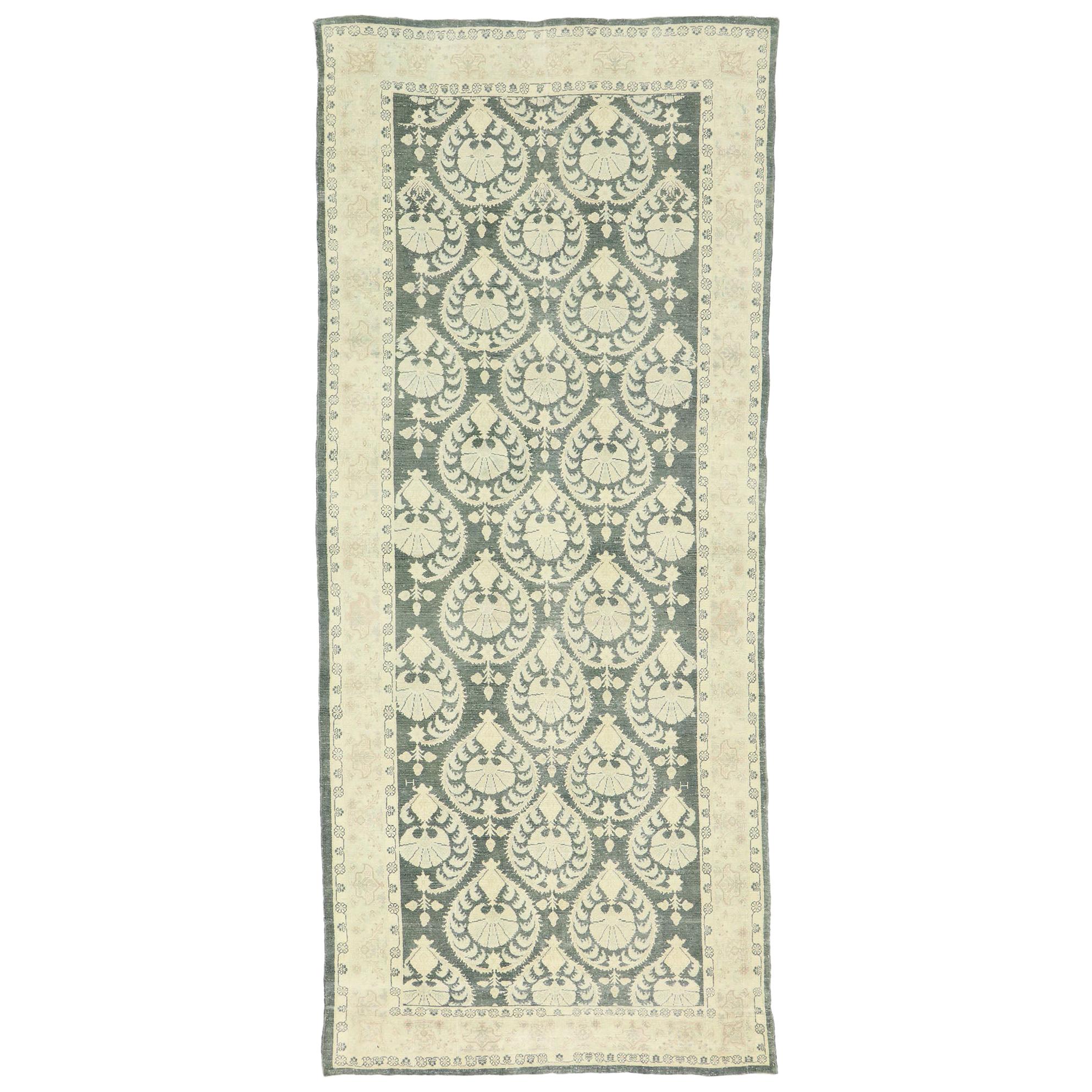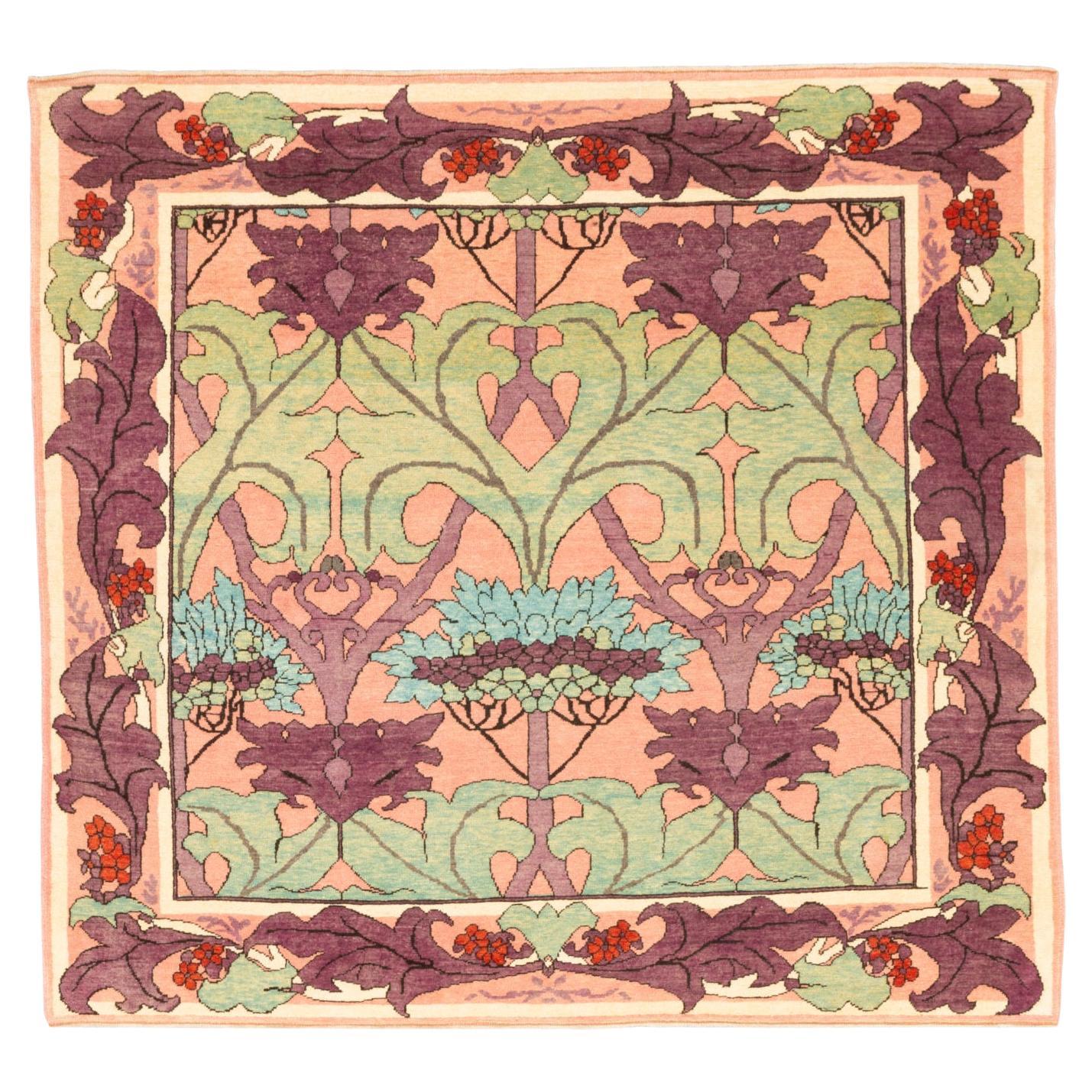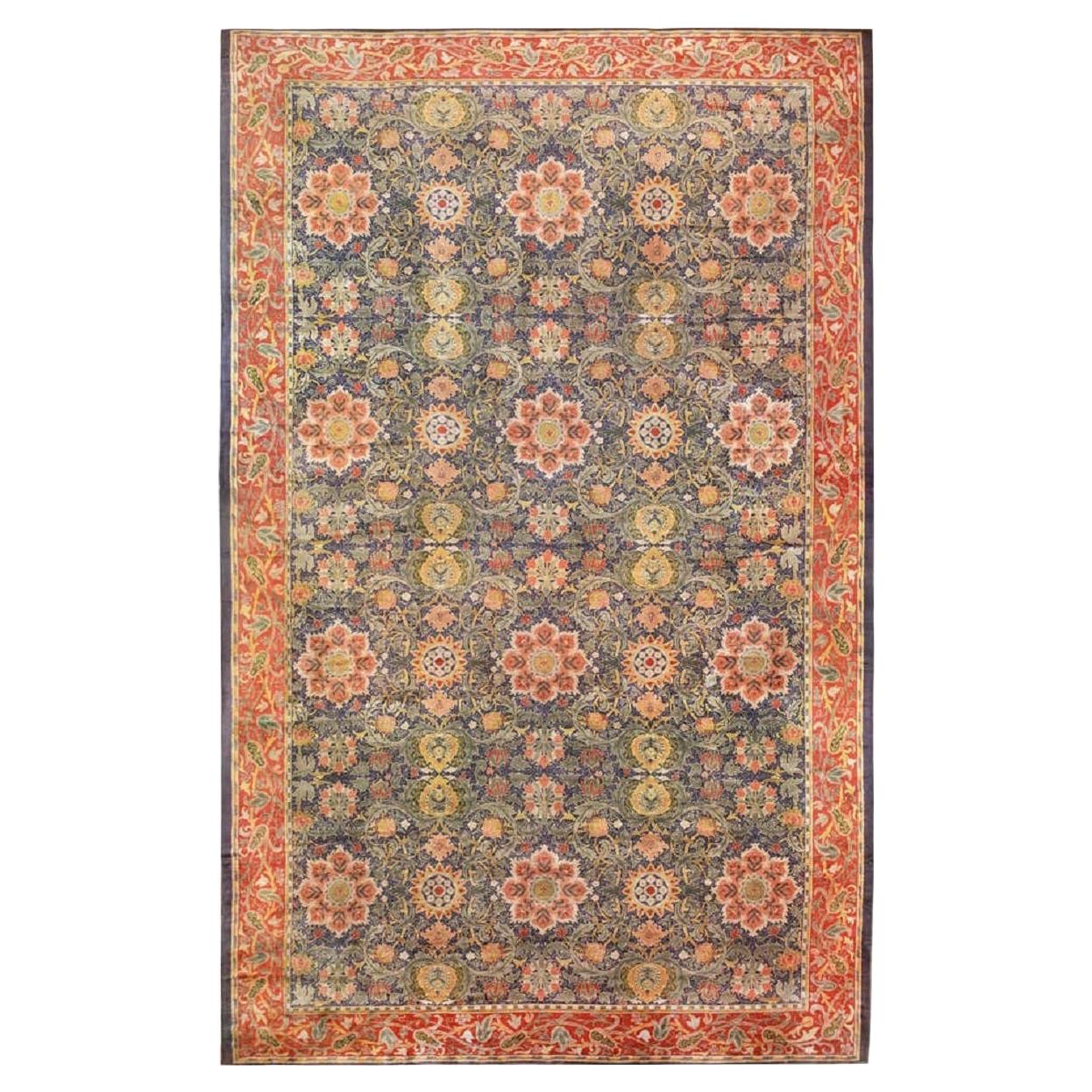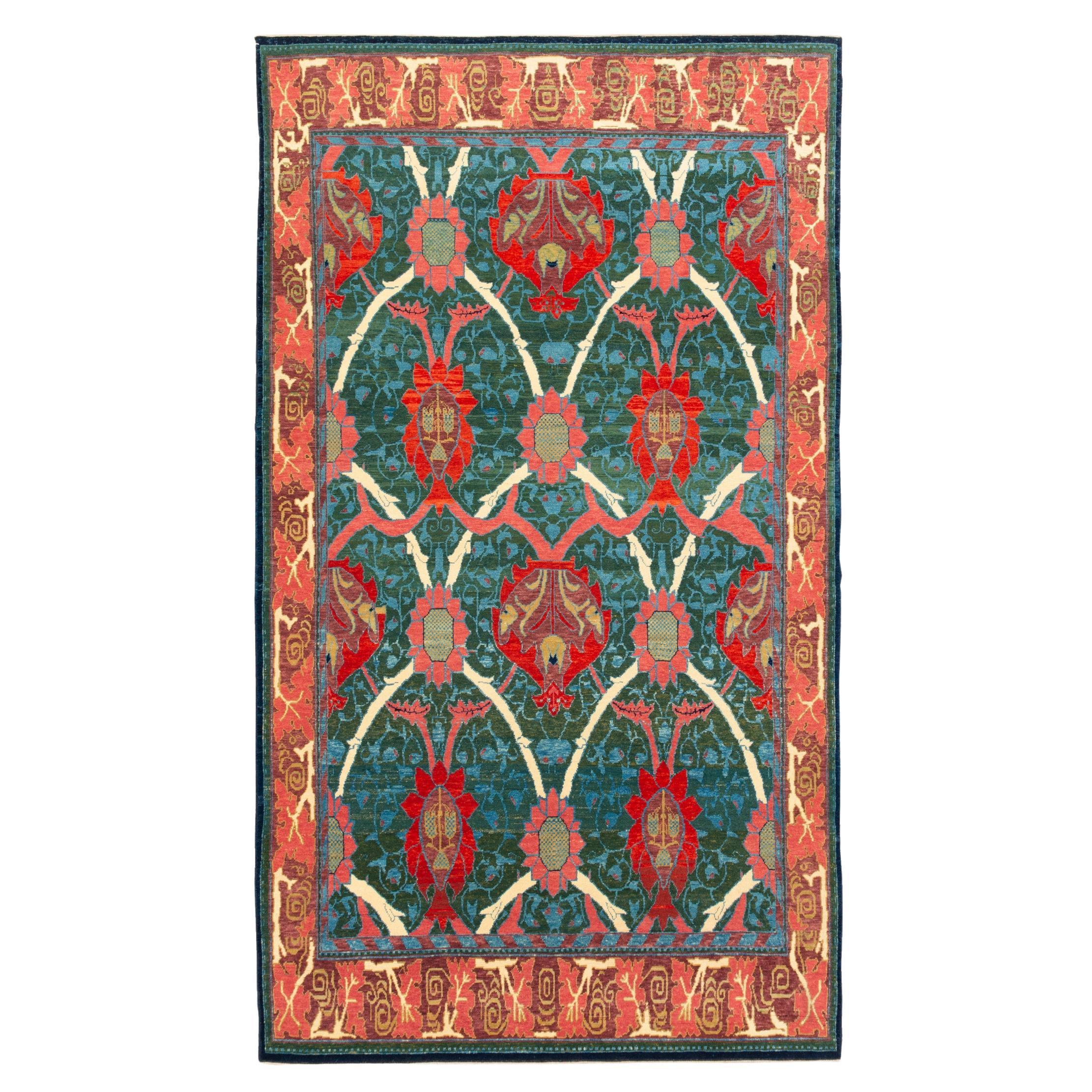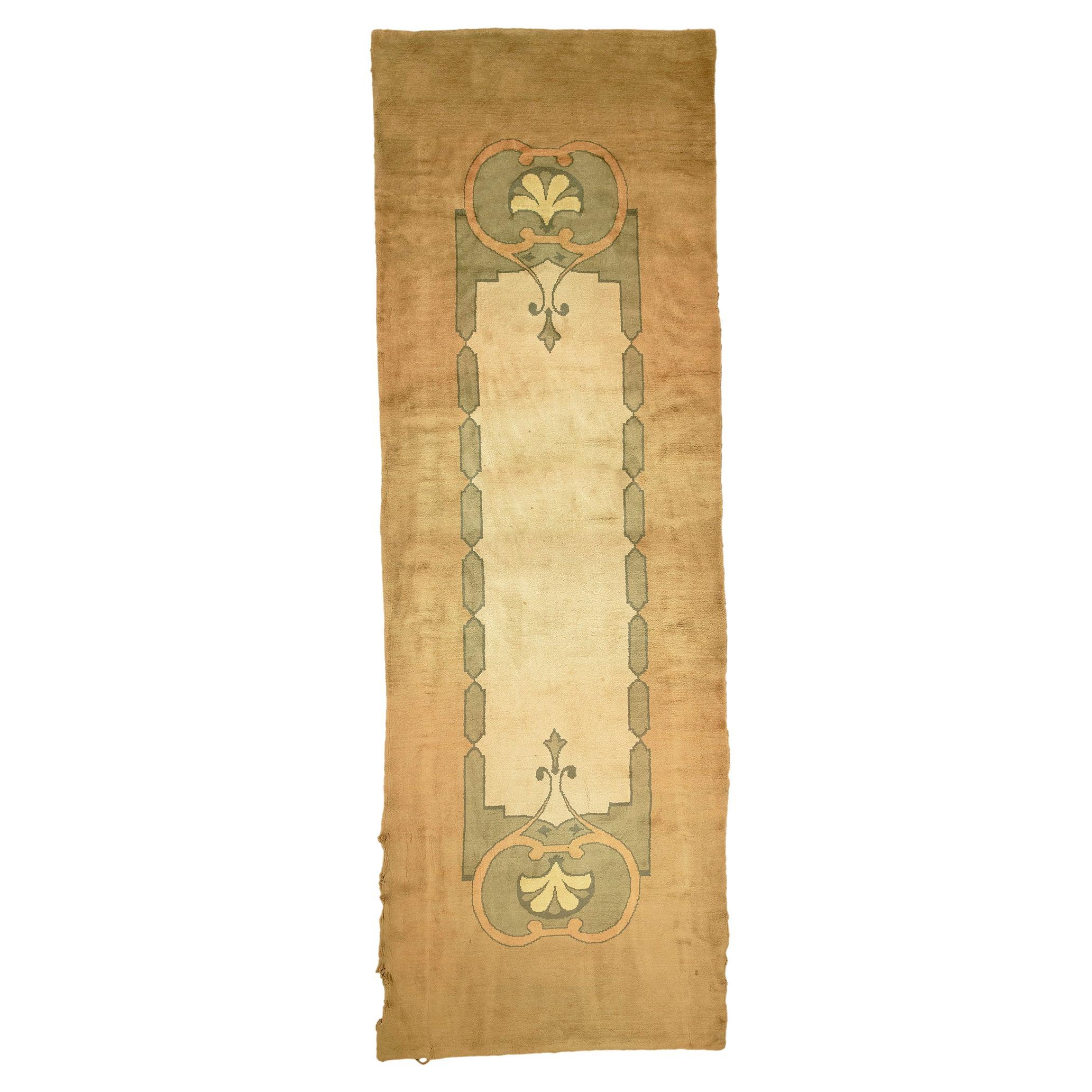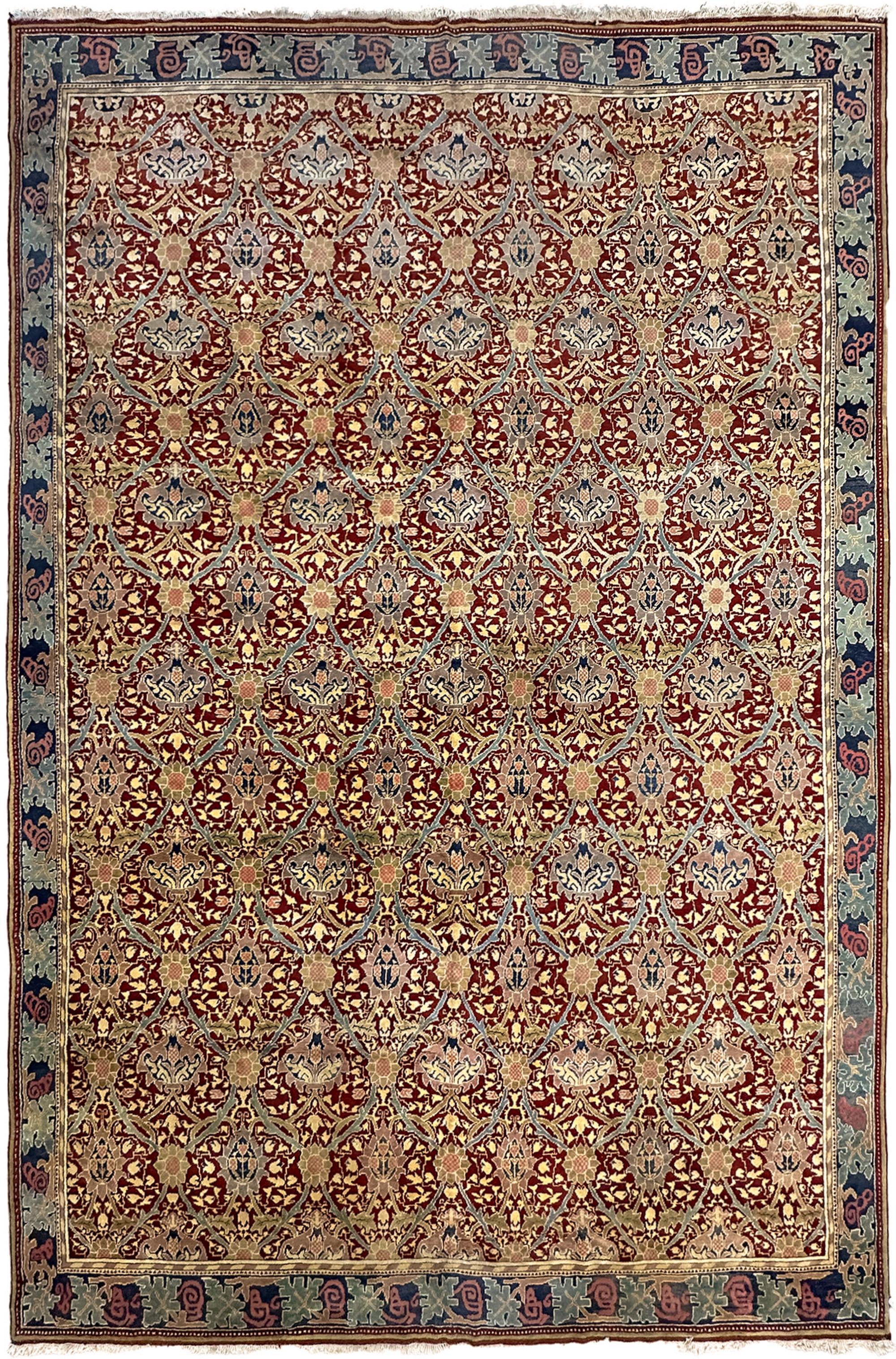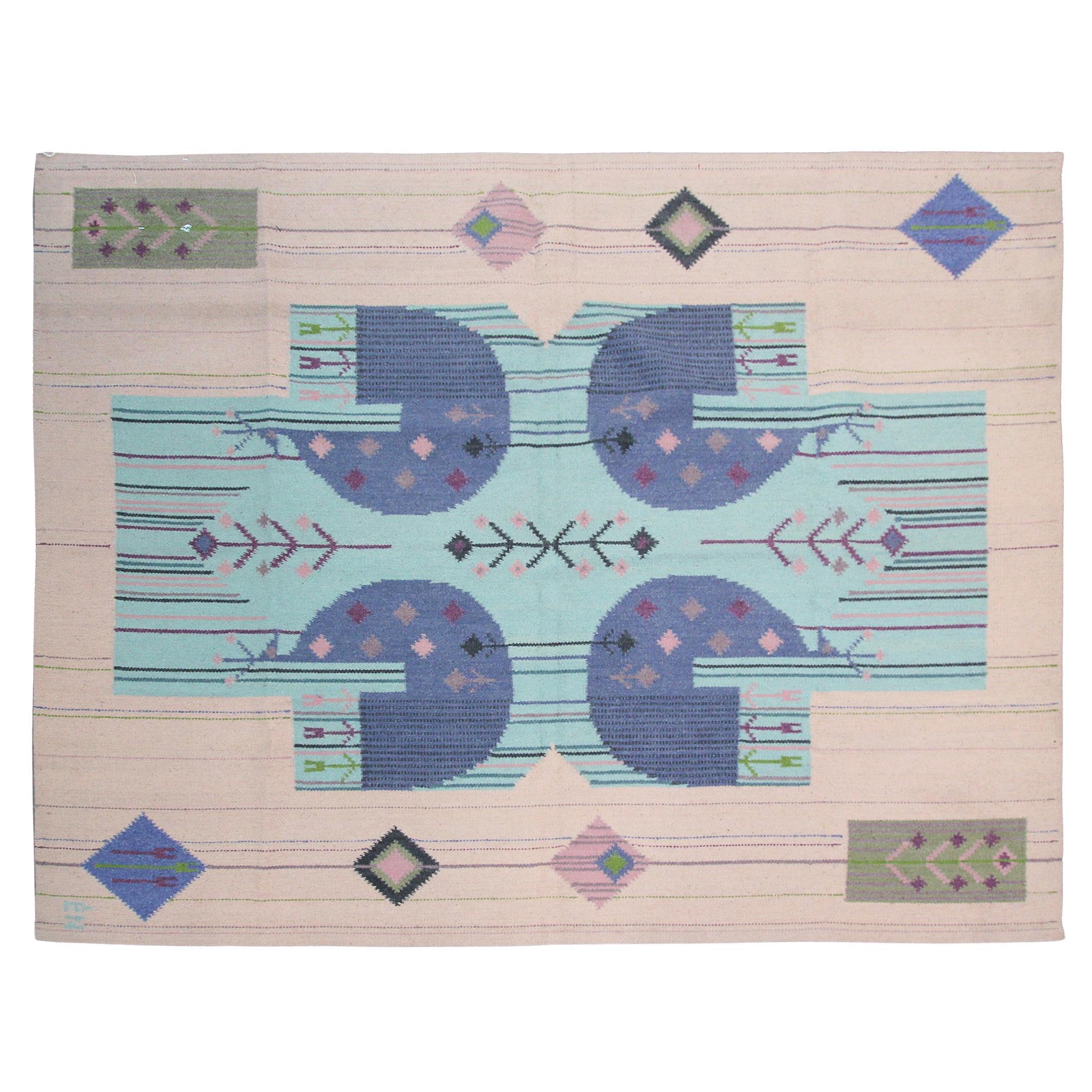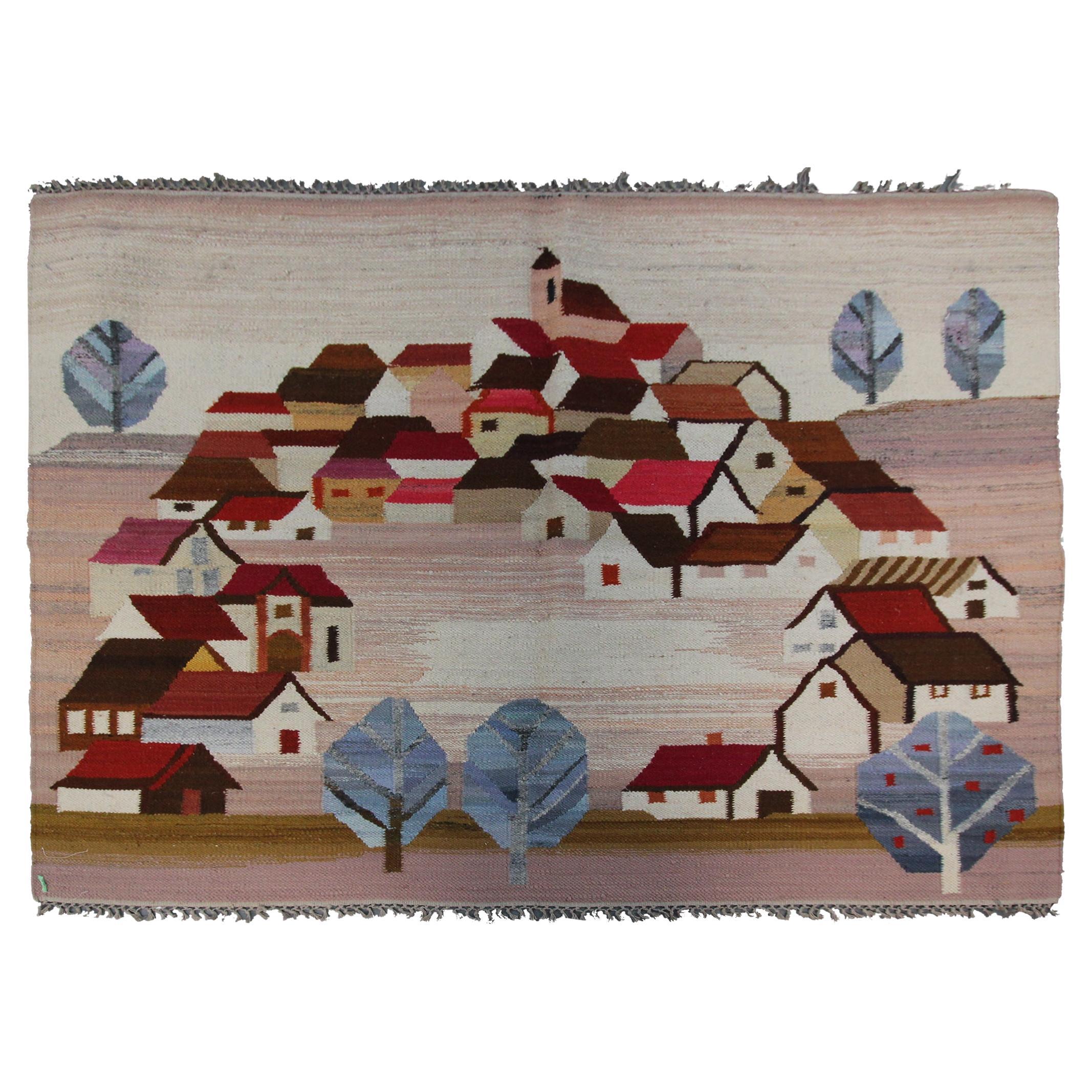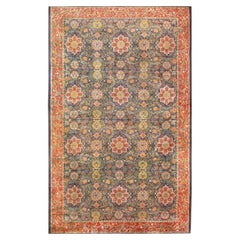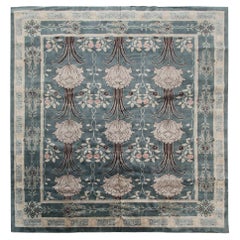
Vintage Art Nouveau Rug Arts & Crafts Rug William Morris Square Handmade
View Similar Items
Want more images or videos?
Request additional images or videos from the seller
1 of 9
Vintage Art Nouveau Rug Arts & Crafts Rug William Morris Square Handmade
About the Item
- Dimensions:Width: 140.95 in (358 cm)Length: 140.95 in (358 cm)
- Style:Art Nouveau (In the Style Of)
- Materials and Techniques:Wool,Hand-Knotted
- Place of Origin:
- Period:
- Date of Manufacture:1975
- Condition:Full pile, high quality New Zealand Wool.
- Seller Location:New York, NY
- Reference Number:Seller: k253031stDibs: LU6964229082662
About the Seller
5.0
Gold Seller
These expertly vetted sellers are highly rated and consistently exceed customer expectations.
Established in 1973
1stDibs seller since 2022
37 sales on 1stDibs
Typical response time: 1 hour
More From This SellerView All
- Vintage Donegal Rug Vintage Arts & Crafts Rug Art Nouveau Rug Signed 10x17 LargeLocated in New York, NYRare Vintage Arts & Crafts Rug Bird Area Rug Signed Pink 9'9" x 16'8" (10x17) 297cmx508cm "This is beautiful vintage European Arts & Crafts rug. This signed piece has a very uniqu...Category
Vintage 1960s Spanish Art Nouveau Western European Rugs
MaterialsWool
$7,010 Sale Price24% Off - Oversized Antique Donegal Rug Arts & Crafts Rug European Art Nouveau RugLocated in New York, NY13'x20' Antique Rare Antique European Donegal Rare Arts & Crafts rug Art Deco Rug Art Nouveau Handmade Rug "This is an exquisite, rare size antique...Category
Vintage 1920s European Arts and Crafts Western European Rugs
MaterialsWool
$10,267 Sale Price20% Off - Vintage Arts & Crafts Rug Art Nouveau Rug William Morris Art Deco Rug 12x15Located in New York, NYVintage Arts & Crafts Rug Rare Art Nouveau Rug William Morris Art Deco Rug 12x15 11'11" x 14'9" 363cm x 450 cm "This is a Magnificent Arts & crafts rug with...Category
Vintage 1970s Turkish Turkish Rugs
MaterialsWool
$11,600 Sale Price20% Off - Vintage European Kilim Flatwoven Rug Kelim Rug Handmade Tapestry Art Nouveau RugLocated in New York, NYVintage European Kilim flatwoven rug flatwoven Kelim rug handmade tapestry 5x6 4'9" x 6'3" 145cm x 191cm "This is a beautiful European kilim Ru...Category
Vintage 1970s Spanish Art Nouveau Western European Rugs
MaterialsWool
$3,400 Sale Price20% Off - Vintage European Kilim Flatwoven Rug Kelim Rug Handmade Tapestry Art Nouveau RugLocated in New York, NYVintage European Kilim Flatwoven Rug Art Nouveau Signed Tapestry 5'2" x 7'3" 158cm x 221cm "This is a beautiful Vintage European Rug tapestry. Thi...Category
Vintage 1970s European Art Nouveau Western European Rugs
MaterialsWool
$3,360 Sale Price / item20% Off - Vintage European Kilim Flatwoven Rug Kelim Rug Handmade Tapestry Art Nouveau RugLocated in New York, NYVintage European Kilim flat woven rug Art Nouveau Tapestry 4' x 5'2" 135cm x 158cm "This is a beautiful Vintage European Rug tapestry. This mag...Category
Vintage 1970s Spanish Art Nouveau Western European Rugs
MaterialsWool
$3,080 Sale Price20% Off
You May Also Like
- Arts & Crafts Style Distressed Vintage Romanian Rug Inspired by William MorrisBy William Morris (English)Located in Dallas, TX53033, distressed vintage Romanian Rug inspired by William Morris with Arts & Crafts style. Reminisce of 19th century French designs and decorativ...Category
Mid-20th Century Romanian Arts and Crafts Western European Rugs
MaterialsWool
- Ararat Rugs the Fintona William Morris Carpet, Arts and Crafts, Natural Dyed RugBy Ararat RugsLocated in Tokyo, JPThe source of the carpet comes from the book Arts & Crafts Carpets, by Malcolm Haslam, and David Black, 1991, fig.55. This Donegal carpet was possibly designed by the Silver Studio for Liberty’s c.1902, United Kingdom. In 1887 English artist and bookbinder T.J. Cobden Sanderson, suggested that a new group be named the “Arts and Crafts Exhibition Society” As a result, he was the first to use the term “Art and Crafts” and also is credited with naming this new emerging movement. The Arts & Crafts movement was inspired by the degradation of product standards that resulted from the factory production age. The rise of machinery in manufacturing caused a noticeable decline in uniqueness and crafts. These anti-industrial reformers promoted economic advancement and social change. They wanted to eliminate poor quality and “artificial” items from 19th-century British society. They saw a plethora of uninteresting items on display at the Great Exhibition of 1851 and became inspired to launch a campaign for originality and uniqueness. William Morris was an English designer, as well as an uplifting social activist and writer. Morris is credited with sparking the rebirth of textile arts and traditional means of production. In 1861, Morris and a small group of designers opened an incredibly fashionable design company that grew to be largely successful. Morris left behind works in many different mediums such as textiles, books, furniture, stained glass, and area rugs. But in the end, he is most remembered for the magnificent wallpapers that he designed. He got much of his inspiration from the natural world. Through his interior decor pieces, Morris set out to convert rooms or spaces into meadows with beautiful trees meandering, vines, and plants. This concept of taking something industrial and man-made, and converting it into something natural is what William Morris meant when he once said: “-any decoration is futile… when it does not remind you of something beyond itself.” Morris was a huge commercial success and his works are some of the most sought-after pieces in the world of design and decor. He is also credited with almost single-handedly reviving the British textile arts as well as their methods of production. Morris was also severely critical of machine-made goods, exclaiming, “Today almost all wares that are made by civilized man are shabbily and pretentiously ugly.” Houses were filled “with tons and tons of unutterable rubbish,” which, he suggested, should be heaped onto a gigantic bonfire! “As a condition of life, production by machinery is altogether evil.” He masterminded one of the most well-known styles of Arts & Crafts, recognizable by its twisting and arching patterns and simple, elegant floral design prints. Although Morris believed that Persian carpets were the greatest ever made, he adopted the coarser Turkish (Ghiordes) knot for his own hand-knotted carpet manufacture. They were woven at a thickness of 25 knots to the square inch at that time. Morris & Co.’s rugs are reminiscent of Persian garden design carpets in that they are smartly styled depictions of English gardens. Donegal also started producing highly desirable Irish rugs in the late 19th century. The Donegal rugs were predominantly created by English architects C.F.A. Voysey and Gavin Morton. The hand-crafted Voysey rugs are typically woven in England, Scotland, and Ireland. Voysey had a knack for using contrasting shapes to decorate flat monochromatic spaces. Dark outlines added a flair of drama to his signature pattern and Celtic rug...Category
21st Century and Contemporary Turkish Arts and Crafts Western European Rugs
MaterialsWool, Organic Material, Natural Fiber
- Antique Arts & Crafts William Morris Design Rug. Size: 19 ft x 30 ftBy William Morris (English)Located in New York, NYMagnificent and rare large oversized antique Arts & Crafts William Morris Design rug, country of origin / rug type: Irish rug, circa date: Late 19th century. Size: 19 ft x 30 ft (5.7...Category
Antique Late 19th Century Irish Arts and Crafts Western European Rugs
MaterialsWool
- Ararat Rugs Holland Park William Morris Carpet, Arts and Crafts, Natural DyedBy Ararat RugsLocated in Tokyo, JPThe source of carpet comes from the book Arts & Crafts Carpets, by Malcolm Haslam, and David Black, 1991, fig.49. This Hammersmith carpet was designed by William Morris in 1882, in the United Kingdom. In 1887 English artist and bookbinder T.J. Cobden Sanderson, suggested that a new group be named the “Arts and Crafts Exhibition Society” As a result, he was the first to use the term “Art and Crafts” and also is credited with naming this new emerging movement. The Arts & Crafts movement was inspired by the degradation of product standards that resulted from the factory production age. The rise of machinery in manufacturing caused a noticeable decline in uniqueness and crafts. These anti-Industrial reformers promoted economic advancement and social change. They wanted to eliminate poor quality and “artificial” items from 19th century British society. They saw a plethora of uninteresting items on display at the Great Exhibition of 1851 and became inspired to launch a Campaign for originality and uniqueness. William Morris was an English designer, as well as an uplifting social activist and writer. Morris is credited with sparking the rebirth of textile arts and traditional means of production. In 1861, Morris and a small group of designers opened an incredibly fashionable design company that grew to be largely successful. Morris left behind works in many different mediums such as textiles, books, furniture, stained glass, and area rugs. But in the end, he is most remembered for the magnificent wallpapers that he designed. He got much of his inspiration from the natural world. Through his interior decor pieces, Morris set out to convert rooms or spaces into meadows with beautiful trees meandering, vines, and plants. This concept of taking something Industrial and man-made, and converting it into something natural is what William Morris meant when he once said: “-any decoration is futile… when it does not remind you of something beyond itself.” Morris was a huge commercial success and his works are some of the most sought-after pieces in the world of design and decor. He is also credited with almost single-handedly reviving the British textile arts as well as their methods of production. Morris was also severely critical of machine-made goods, exclaiming, “Today almost all wares that are made by civilized man are shabbily and pretentiously ugly.” Houses were filled “with tons and tons of unutterable rubbish,” which, he suggested, should be heaped onto a gigantic bonfire! “As a condition of life, production by machinery is altogether evil.” He masterminded one of the most well-known styles of Arts & Crafts, recognizable by its twisting and arching patterns and simple, elegant floral design prints. Although Morris believed that Persian carpets were the greatest ever made, he adopted the coarser Turkish (Ghiordes) knot for his hand knotted carpet manufacture. They were woven at a thickness of 25 knots to the square inch at that time. Morris & Co.’s rugs are reminiscent of Persian garden design carpets in that they are smartly styled depictions of English gardens. Donegal also started producing highly desirable Irish rugs in the late 19th century. The Donegal rugs were predominantly created by English architects C.F.A. Voysey and Gavin Morton. The handcrafted Voysey rugs are typically woven in England, Scotland, and Ireland. Voysey had a knack for using contrasting shapes to decorate flat monochromatic spaces. Dark outlines added a flair of drama to his signature pattern and Celtic rug...Category
21st Century and Contemporary Turkish Arts and Crafts Western European Rugs
MaterialsWool, Natural Fiber, Organic Material
- Vintage Arts & Crafts RugLocated in New York, NYVintage Arts & Crafts runner circa 1910 France.Category
Early 20th Century French Arts and Crafts Western European Rugs
MaterialsWool
$16,000 - Antique Spanish Art Nouveau Orientalist Square RugLocated in Milan, ITA rare and unusual Art Nouveau carpet decorated by a central medallion inspired by Oriental rugs dominating over a brilliant red open field, with paisley motifs embellishing the corn...Category
Vintage 1910s Spanish Art Nouveau Western European Rugs
MaterialsWool
Recently Viewed
View AllMore Ways To Browse
Europe Shipping
Handmade Vintage Crafts
Shop Retro Collection
William Vintage
Vintage Arts Light
Retro Square Rug
Square Vintage Wool Rug
Vintage Art Nouveau Patterns
Art Nouveau Service
Vintage Rose Art
Rose Vintage Art
Morris William
William And Morris
World Globe Rare
Antique Arts And Crafts Carpet
Antique Arts Craft Rug
Antique Rugs Arts And Crafts
Vintage Square Rug
